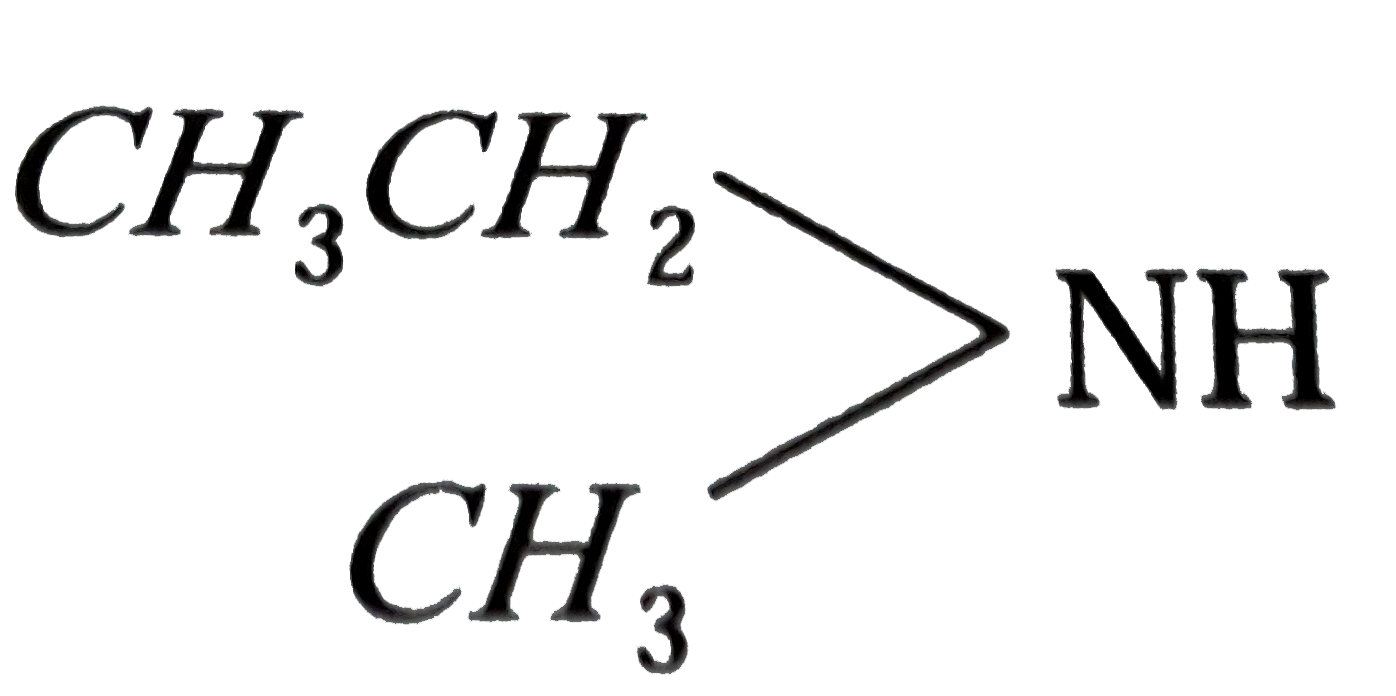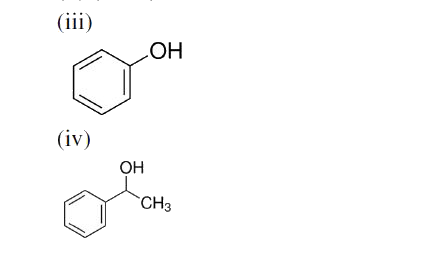Consider the following alcohols
(I)CH3CH2OH
(II)(CH3)2CHOH
(III)(CH3)3COH
Ease of esterification of above alcohol with HCOOH is
I<II<III
III<II<I
II<I<III
equal
The correct Answer is:B
To determine the ease of esterification of the given alcohols with formic acid (HCOOH), we need to analyze the structure of each alcohol and consider the concept of steric hindrance.
1. Identify the Types of Alcohols:
- Alcohol (I): CH3CH2OH (Ethanol) - This is a primary alcohol.
- Alcohol (II): (CH3)2CHOH (Isopropanol) - This is a secondary alcohol.
- Alcohol (III): (CH3)3COH (Tert-butanol) - This is a tertiary alcohol.
2. Understand Esterification:
- Esterification is a reaction between an alcohol and a carboxylic acid (in this case, formic acid) to form an ester and water.
- The general reaction can be represented as:
\(
\text{Alcohol} + \text{Carboxylic Acid} \rightarrow \text{Ester} + \text{Water}
\)
3. Consider Steric Hindrance:
- The ease of esterification is influenced by steric hindrance. Steric hindrance refers to the difficulty of a nucleophile attacking an electrophile due to the presence of bulky groups.
- Primary alcohols have the least steric hindrance, followed by secondary alcohols, and tertiary alcohols have the most steric hindrance.
4. Order of Esterification:
- Since the rate of esterification is inversely proportional to steric hindrance:
- Primary alcohols (I) will undergo esterification most easily.
- Secondary alcohols (II) will be less favorable than primary.
- Tertiary alcohols (III) will undergo esterification the least due to high steric hindrance.
5. Conclusion:
- Therefore, the order of ease of esterification with formic acid is:
\(
\text{Primary (I)} > \text{Secondary (II)} > \text{Tertiary (III)}
\)
Final Answer:
The order of ease of esterification of the given alcohols with HCOOH is:
(I) > (II) > (III)
---
- Alcohol (I): CH3CH2OH (Ethanol) - This is a primary alcohol.
- Alcohol (II): (CH3)2CHOH (Isopropanol) - This is a secondary alcohol.
- Alcohol (III): (CH3)3COH (Tert-butanol) - This is a tertiary alcohol.
- Esterification is a reaction between an alcohol and a carboxylic acid (in this case, formic acid) to form an ester and water.
- The general reaction can be represented as:
\(
\text{Alcohol} + \text{Carboxylic Acid} \rightarrow \text{Ester} + \text{Water}
\)
- The ease of esterification is influenced by steric hindrance. Steric hindrance refers to the difficulty of a nucleophile attacking an electrophile due to the presence of bulky groups.
- Primary alcohols have the least steric hindrance, followed by secondary alcohols, and tertiary alcohols have the most steric hindrance.
- Since the rate of esterification is inversely proportional to steric hindrance:
- Primary alcohols (I) will undergo esterification most easily.
- Secondary alcohols (II) will be less favorable than primary.
- Tertiary alcohols (III) will undergo esterification the least due to high steric hindrance.
- Therefore, the order of ease of esterification with formic acid is:
\(
\text{Primary (I)} > \text{Secondary (II)} > \text{Tertiary (III)}
\)
The order of ease of esterification of the given alcohols with HCOOH is:
(I) > (II) > (III)
Similar Questions
Knowledge Check
- Question 1 - Select One
Ease of esterification of following alcohol with HCOOH is
(I)CH3−CH2OH (II)(CH3)2CH−OH
(III)(CH3)3C−OHAIII gt II gt IBI gt II gt IIICII gt I gt IIIDII gt III gt I - Question 2 - Select One
Consider the following reactants,
(I) CH3−COCH3A−−→CH3−CH2−CH3
(II) (CH3)3CHB−−→(CH3)3COH brgt Here, A and B respectively areAZn(Hg)/HCl(conc.) and KMnO4BKMnO4 and Zn(Hg)/conc.HClCH2/Ni and KMnO4DCH3OH and C2H5OH - Question 3 - Select One
An alcohol on oxidation is found to give CH3COOH and CH3CH(OH)CH2CH2CH3 The structure of the alcohol is :
ACH3CH2CH2OHB(CH3)2C(OH)CH2CH3CCH3CH2CH(OH)CH3DCH3CH(OH)CH2CH2CH3
Convert CH3OH into CH3CH2OH,CH3CH(OH)CH3 and (CH3)3COH. Only one type of reagent is permitted in each step.
View SolutionFollowing compounds are given
(i) CH3CH2OH (ii) CH3COCH3
(iii) (CH3)2CHOH (iv) CH3OH
Which of the above compound (s), on being warmed with iodine solution and NaOH, will give iodoform ?View SolutionDipole moment of CH3CH2CH3(I),CH3CH2OH(II) and CH_3CH-2F(III) is in order
View SolutionWhich of the following should be most volatile?
I) CH3CH2CH2NH2II)(CH3)3NIII)

IV) CH3CH2CH3View SolutionDipole moment of CH3CH2CH3(I),CH3CH2OH(II) and CH3CH2F(III) is in order
View Solution


